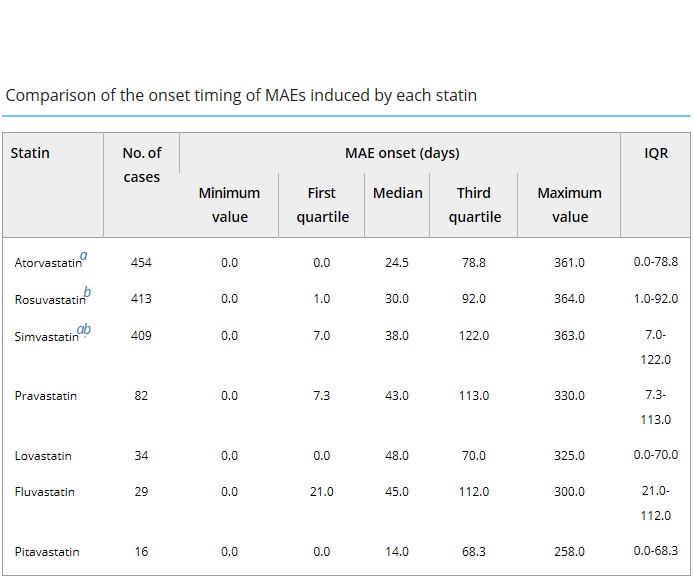Statins have been commonly associated with muscle pain and other musculoskeletal adverse events (MAEs) in some patients. This study presented in the journal Pharmacology Research & Perspectives which examined the timing of the development and appearance of AEDs during treatment and looked at the possible influence of other drugs, identifies a faster onset of these side effects with “high-intensity” statins. Valuable information for the treatment of patients who experience these effects.

The study looked at adverse event data from more than 1,500 patients who received a prescription for statins (atorvastatin, rosuvastatin, simvastatin, lovastatin, fluvastatin, pitavastatin and pravastatin) extracted from the adverse event reporting system file of the US Food and Drug Administration. The analysis shows that:
- the frequency of appearance of musculoskeletal adverse effects induced by statins differs from one statin to another: these musculoskeletal effects appear significantly more quickly with high-intensity statins (atorvastatin and rosuvastatin), vs simvastatin;
- concurrent use of medications, including medications that may also cause similar adverse effects, does not influence the development of these muscle symptoms.
- The incidence of these musculoskeletal effects was found to be higher with atorvastatin, followed by rosuvastatin and simvastatin, and the number of cases was greater than 400 in total for the 3 statins (see table below);
- The incidence of these effects appears low with pravastatin, lovastatin, fluvastatin and pitavastatin. In particular, only 16 cases have been identified for pitavastatin (see table below).
The musculoskeletal effects appear between 24 and 43 days of treatment: the time to appearance of AEDs induced by atorvastatin and rosuvastatin are respectively 24 and 30 days, therefore shorter than those associated with simvastatin (43 days). The time to onset of AEDs induced by pravastatin, lovastatin and fluvastatin is similar to that of simvastatin, ie 40 days in general.
What ratio of MAEs/number of prescriptions? These cases of adverse events, the number of which is very probably underestimated, should be able to be related to the volume of prescriptions for the various statins. Thus the authors note that the small number of cases noted with pitavastatin is probably linked to the recent marketing of the drug.
Nonetheless, these adverse event data associated with the various statins, a very and increasingly widely prescribed treatment, may allow clinicians to better tailor treatment based on patient health outcomes and lifestyle and ultimately , to help improve the safety of these drugs.